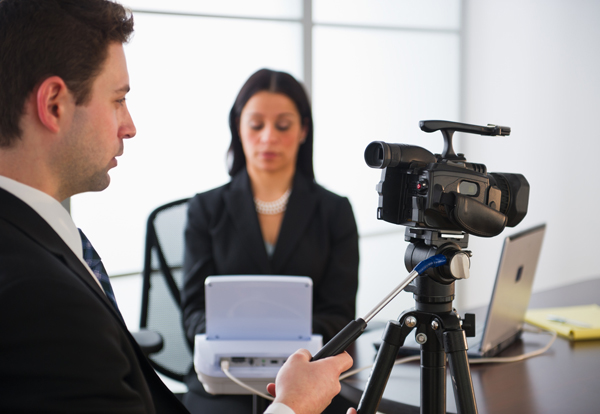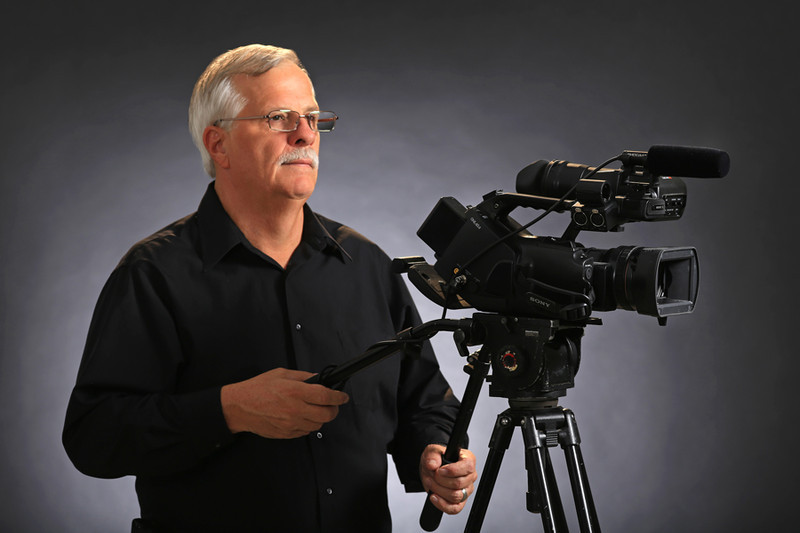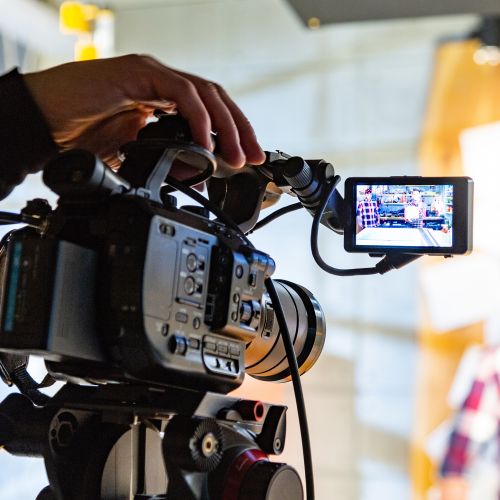Exploring the Systems of Legal Videography: Introduction Its Procedure in Shielding Genuine Visual Testament for Judicial Proceedings
In the realm of judicial proceedings, the role of lawful videography stands as a cornerstone in protecting and providing visual evidence. As modern technology remains to breakthrough, the systems behind legal videography have come to be significantly complex, providing an important layer of credibility to testaments recorded on video. By delving into the operational intricacies of lawful videography, one can discover the thorough procedures that secure the integrity of aesthetic evidence presented in courtrooms - Legal Videography. This expedition not only sheds light on the historic evolution of legal videography however likewise hints at the future fads that may even more transform how visual testaments are supported in the world of justice.
Historical Advancement of Legal Videography
Examining the historic development of lawful videography discloses a significant improvement in the recording and presentation of visual proof within the legal landscape. In the past, legal procedures greatly depended on composed photographs and records to record events and offer proof. However, with the arrival of video clip technology, the legal market observed a paradigm shift in exactly how visual testimony was captured and provided.
The development of legal videography can be traced back to the late 20th century when improvements in video clip recording tools made it more available for use in courts. This technical innovation not just boosted the precision and dependability of visual evidence but additionally transformed the method situations were provided to courts and juries (Legal Videography). Attorneys started to identify the persuasive power of video recordings in conveying emotions, subtleties, and non-verbal hints that created records or photos alone could not capture efficiently

Modern Technology Developments in Video Clip Paperwork
What essential technical developments have transformed video clip paperwork in the legal area? The lawful area has seen substantial developments in video clip paperwork innovation that have actually enhanced the credibility and reliability of visual evidence in judicial process.
Furthermore, innovations in video encryption and watermarking modern technologies have actually strengthened the safety and tamper-proof nature of video proof, protecting it versus unapproved alterations or meddling. The advent of cloud storage services and remote gain access to capacities has structured the storage space, access, and sharing of video evidence, helping with smooth collaboration among legal professionals and ensuring effective accessibility to essential aesthetic testaments when needed. These technical improvements in video clip paperwork have actually certainly reinvented the lawful area, improving the precision, integrity, and admissibility of aesthetic proof in judicial procedures.
Function of Legal Videographers in Court Settings
The evolution of video clip documents modern technology in the legal field has actually demanded a vital function for lawful videographers in court room settings, guaranteeing the stability and reliability of aesthetic statements presented during judicial proceedings. Lawful videographers play an essential role in recording and maintaining exact visual proof that can be essential in lawsuit. Their obligation extends to establishing up tools, taping process, and generating top notch videos that precisely show the events in the court.
Furthermore, legal videographers often work closely with legal teams to make certain that the video clip evidence aligns with the case's needs and can be properly presented in court to sustain the lawful disagreements being made. Generally, the function of lawful videographers in court room setups is crucial in upholding the concepts of justice and making sure the transparency of legal proceedings. Legal Videography.

Ensuring Admissibility and Stability of Video Clip Evidence
To preserve the trustworthiness of aesthetic proof provided in legal process, guaranteeing the admissibility and stability of video proof is an essential obligation for legal videographers. Admissibility refers to the acceptance of proof by the court, and for video clip proof to be admissible, it should fulfill particular requirements. Lawful videographers play a crucial role in ensuring that the video clips they capture abide by the rules of evidence, such as relevance, dependability, and authenticity.
Integrity of video evidence involves preserving the creativity and precision of the video footage from look at this site the time it is tape-recorded up until it is provided in court. This consists of safely storing the video clip files, documenting the chain of wardship, and protecting against any meddling or alterations. Legal videographers must follow strict protocols to ensure the stability of the video clip proof and avoid any type of challenges to its credibility.
Future Trends in Legal Videography
Given the raising dependence on innovation in legal proceedings, legal videographers are positioned to welcome cutting-edge improvements shaping the future of aesthetic testimony capture and presentation. Among the famous fads imminent is the integration of online reality (VR) and augmented reality (AR) innovations right into legal videography. These innovations have the prospective to reinvent just how visual proof is presented in courtrooms, allowing juries and courts to immerse themselves in the scene of the criminal offense or incident.
Additionally, using artificial intelligence (AI) formulas for video evaluation is anticipated to simplify the procedure of reviewing and assessing big quantities of video footage. AI can aid in determining vital moments, anomalies, and patterns within videos, boosting the performance of lawful investigations.

Final Thought
Finally, legal videography has actually played an important role in giving authentic visual evidence for judicial procedures. With technical advancements and the competence of legal videographers, the integrity and admissibility of video evidence are ensured in courtroom setups. As legal videography remains to advance, it will be important to copyright criteria that maintain the precision and integrity of aesthetic testament for the future of lawful process.
Examining the historic progression of legal videography discloses a considerable makeover in the capturing and discussion of visual evidence within the lawful landscape.The advancement of video clip documents innovation in the legal field has actually necessitated a crucial function for lawful browse around this web-site videographers in courtroom settings, making sure the honesty and dependability of aesthetic testaments presented during judicial proceedings. Additionally, lawful videographers often work closely with legal teams to make sure that the video clip proof lines up with the instance's demands find out and can be effectively provided in court to sustain the legal disagreements being made.To maintain the trustworthiness of visual evidence presented in legal process, ensuring the admissibility and integrity of video proof is a critical responsibility for lawful videographers. As lawful videography continues to develop, it will be important to support criteria that preserve the accuracy and reliability of visual testament for the future of legal proceedings.